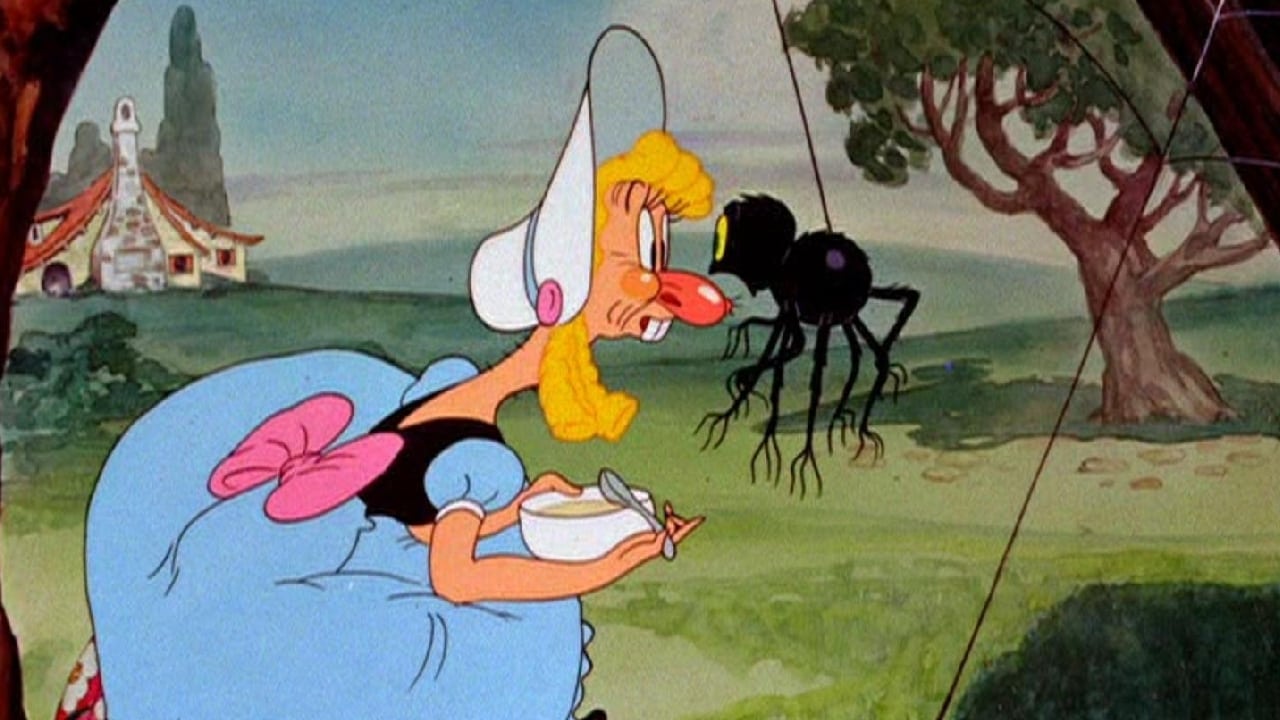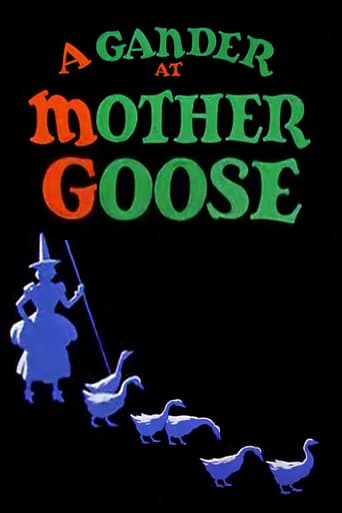

Tex Avery was, and is, one of the greatest and most talented animation directors there was with an immediately recognisable visual style (for example you can recognise his character designs anywhere). Also an example of a director where even his lesser efforts have some entertainment value and are interesting enough.'A Gander at Mother Goose' is not one of his best. Some gags do work better than others, with some of them feeling too rushed and short, almost like throwaway one-jokes. Avery also works better when wilder and more elaborate, 'A Gander at Mother Goose' is solidly paced and it is interesting to see Avery take on a cartoon made up of takes on fairy-tales and nursery rhymes but it is a style that doesn't entirely suit him or play fully to his strengths. It is certainly enjoyable, but for Avery it's also a little bland.However, there is no denying that the animation is amazing, rich in detail, high in imagination and vibrantly colourful. Same with the music, which sounds wonderful, is orchestrated very cleverly with an ability to be dynamic with the action and there is so much energy and character. Also liked the jazzy arrangements of pre-existing material.While the gags were variable, there are gags where Avery's style really does shine and are also incredibly funny. The Big Bad Wolf, Jack Be Nimble and that surprisingly daring Humpty Dumpty gags come off best. The characters are lively enough, and there is nothing to complain about the vocal talents.Overall, enjoyable with amazing animation and music, plus any Tex Avery cartoon is worth a peak even if just for interest value, but for Avery, who works better when wilder and more elaborate, it's also a little bland and inconsistent. 7/10 Bethany Cox
... View More"A Gander at Mother Goose" is a 6-minute short film from over 75 years ago and there is no denying how amazing the animation is. Tough to believe that this is from the early 1940s, actually from World War II, but there are no real political references in here as the USA weren't participating actively at that time yet. This film is evidence that these really were the years of the Golden Age of Animation. Unfortunately, the story and comedy is not really on par here. It is basically a collection of very short nursery rhymes (half a minute perhaps), but apart from the wolf with the smelly breath none of them are really funny and all rely on one funny final moment, which basically makes the entire thing very forgettable if this one isn't working. I personally do not recommend the watch. Even for Avery and Blanc, not everyone can be a winner.
... View MoreFairy tales were often used as the basis for cartoons in the days of yore. Warner Bros. cartoons usually twisted them into jokes, with Friz Freleng's "Three Little Bops" ("Three Little Pigs" as a jazz song) as the crowning achievement. An earlier effort was Tex Avery's "A Gander at Mother Goose". This was one of many cartoons from the era using children's stories and nursery rhymes as excuses for spot gags. This was not the best one. I personally think that Tex worked best when focusing on an elaborate plot - as was the case with "The Isle of Pingo Pongo" and "Thugs with Dirty Mugs" - so that he could create neater gags.Still, this one isn't bad. Aside from getting to see more of Humpty Dumpty than we expect (they actually got it past the censors!), we can probably guess what Jack and Jill are really doing! Of course, about two months later, Tex brought to the silver screen "A Wild Hare", introducing Bugs Bunny in his first true form. So this one works mostly as a place holder. OK, not great.
... View MoreThis cartoon features a lot of the cornball stuff Warner Brothers and others liked to use in the 1930s and the first year or two of the '40s: poking a little fun at famous fairy tales and imitating actress Katharine Hepburn with her affected "Bryn Mawr accent" to play a role or two.Humpty Dumpty, Jack and Jill, Little Miss Muffet, The Three Little Pigs, the Little Old Lady Who Lived In A Show, and more are all depicted with one-joke scenes. Unfortunately, the jokes all fell flat with either the joke coming from dialog or a sight gag.I wonder if audiences actually laughed at the theater in 1940 over this stuff. I doubt they would today; it's just a little too dated, humor-wise, to be rated more than a "4," and that's being generous. It's just not funny and certainly not the Tex Avery stuff we animated fans came to love later in the decade.
... View More